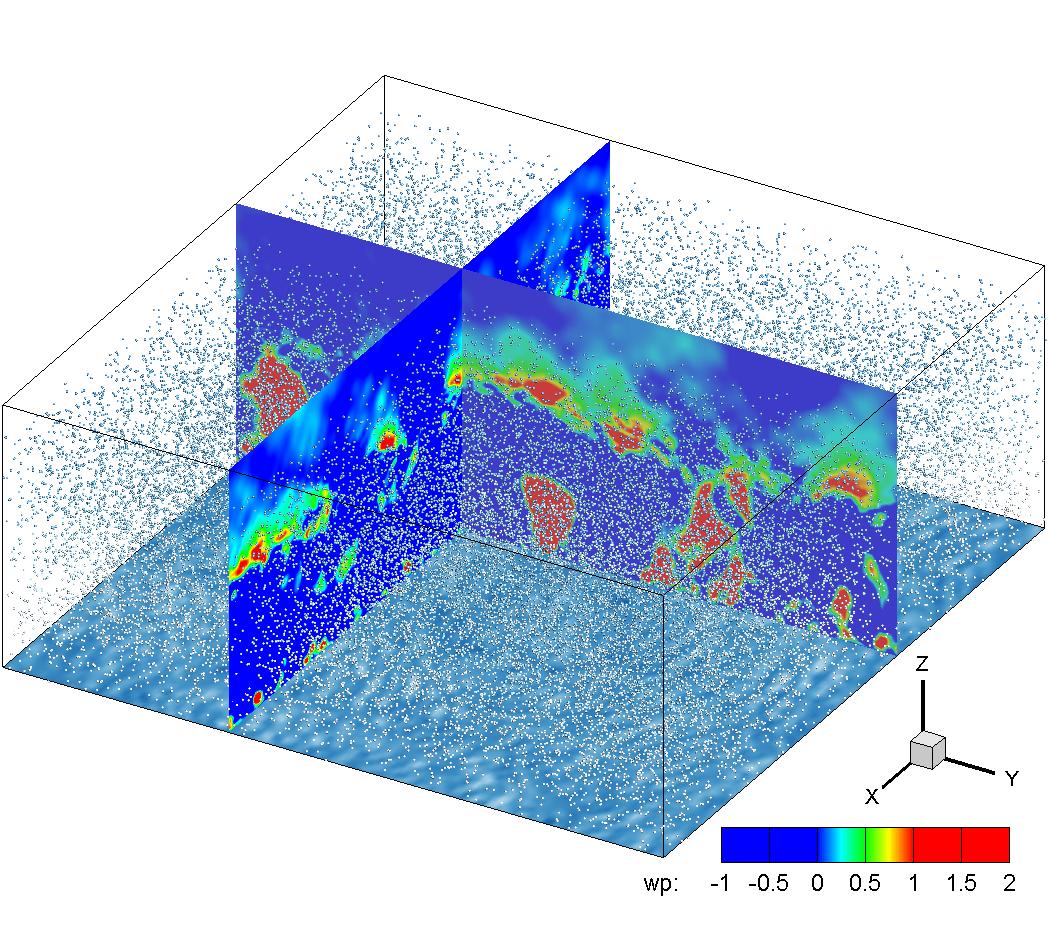
Description
Sea spray production and transport over the ocean are of great interest to different areas of studies including air-sea interaction, cloud physics, air pollution, and, EM propagation due to their impact on Marine Atmospheric Boundary Layer (MABL) processes and turbulence dynamics. Characterizing and quantifying the sea spray production and droplet transport are very important if we are to estimate their impact on MABL dynamics. However, the sea spray droplet behavior, life span, and their thermodynamic interaction with marine atmospheric boundary layer are complex processes and the fundamental mechanisms governing the sea spray transport in MABL cannot be understood by observations alone. This project aims to develop and utilize Large Eddy Simulations combined with Lagrangian particle model which represents the spray droplets of varying sizes to simulate the sea spray fate and transport in MABL. Simulations from the model are used to identify the fundamental mechanisms controlling vertical transport and distribution of sea spray within the MABL, thus elucidate the ongoing knowledge gaps which are impossible to fill using observations alone. The Lagrangian representation of sea spray allows to track individual droplet history and explicit representation of individual droplet’s characteristics based on local ambient conditions thereby providing the details of temporal and spatial behavior of sea spray droplets. These details will help to quantify and characterize the life spans and airborne concentrations of sea spray droplets in MABL which can be used as input to mesoscale air sea interaction models
- Park. H., Sherman, T., Freire, L., Wang, G., Bolster, D., Xian, P., Sorooshian, A., Reid, J., Richter, D.H. (2020), Predicting vertical concentration profiles in the marine atmospheric boundary layer with a Markov chain random walk model, Journal of Geophysical Research: Atmospheres, 125, e2020JD032731
- Nissanka, I.D., Park, H., Freire, L., Chamecki, M., Reid, J., & Richter, D.H. (2018), Parameterized vertical concentration profiles for aerosols in the marine atmospheric boundary layer, Journal of Geophysical Research: Atmospheres, 123, pp 9688-9702
For more information:
Project Aims
- Identify and characterize the fundamental mechanisms governing sea spray behavior in the MABL
- Quantify the airborne sea spray droplet concentrations and size distributions
- Parameterize the vertical sea spray concenetration profiles in the MABL for use in mesoscale weather models